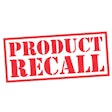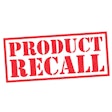
As two recent recalls involving dozens of brands of dog and cat food along with human infections prove, the presence of Salmonella in pet food remains a critical concern for both manufacturers and consumers alike. This bacterium, known for its diverse range of biological varieties or serotypes, can pose distinct risks when contaminating pet food. However, those risks vary depending on the Salmonella serotypes causing the contamination.
“Salmonella is not a singular pathogen but encompasses almost 2,500 different serotypes,” CEO of pathogen monitoring software company Ancera Arjun Ganesan told Petfood Industry. “Each of these serotypes presents unique characteristics, health implications, and intervention strategies. This diversity, along with the various sourced animal original ingredients in the pet food industry, makes managing Salmonella a complex task.”
Salmonella’s extensive array of serotypes exhibit unique characteristics and pathogenic potential. Several are particularly relevant to the pet food industry. Understanding the distinct attributes of these serotypes can help facilities managers implement targeted strategies to mitigate the associated risks.
One key factor differentiating Salmonella serotypes is their varying degrees of pathogenicity. Certain serotypes, such as S. Typhimurium and S. Enteritidis, are known for causing more severe illness in both animals and humans, according to the Center for Disease Control and Prevention. The implications of pet food contamination with these high-pathogenicity serotypes extend beyond the immediate health of animals to potential zoonotic transmission to pet owners and their families.
Potential for transmission of Salmonella to pet owners
The zoonotic potential of Salmonella further underscores the importance of differentiating between serotypes. While pets may exhibit mild or asymptomatic infections, they can serve as carriers of Salmonella, posing a risk to humans through direct contact or the consumption of contaminated pet food. Targeted surveillance and control measures can help prevent cross-contamination and protect both animal and human health.
“Cooked pet food production combines various source ingredients, pelletizing via high pressure and high heat processes,” Ganesan said. “Fresh pet food that contains raw or uncooked meat or eggs is at a higher risk to be contaminated with Salmonella.
“Traceability and process monitoring is vital for identifying the sources of risk, allowing manufacturers to understand where process failures may have occurred. By pinpointing potential sources, it becomes possible to proactively implement optimum sourcing, production, and QC practices. As consumer demand for raw pet food increases, a sound baseline for current and new production systems can arm producers with critical information to rapidly respond in times of crisis.”
Mitigating the risks associated with Salmonella in pet food requires implementing specific preventive measures, such as rigorous hygiene protocols, testing regimes, and sourcing practices. Manufacturers must be aware of the specific serotypes prevalent in their supply chains and processing facilities to develop and implement effective control strategies.
The diverse serotypes of Salmonella present varied risks when contaminating pet food. Manufacturers in the pet food industry must be vigilant in understanding the specific serotypes relevant to their operations and adopt tailored preventive measures to ensure the safety of both animal and human consumers.

















